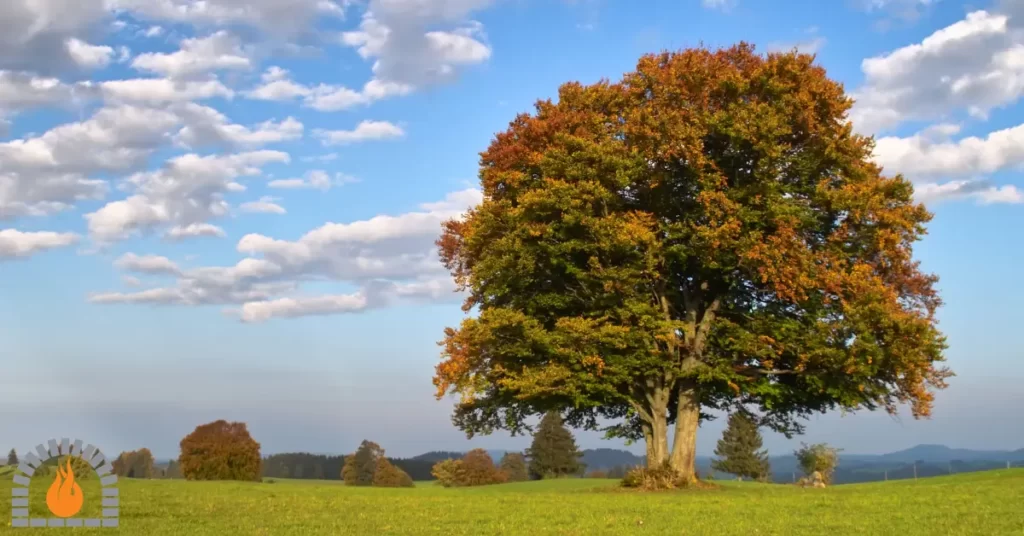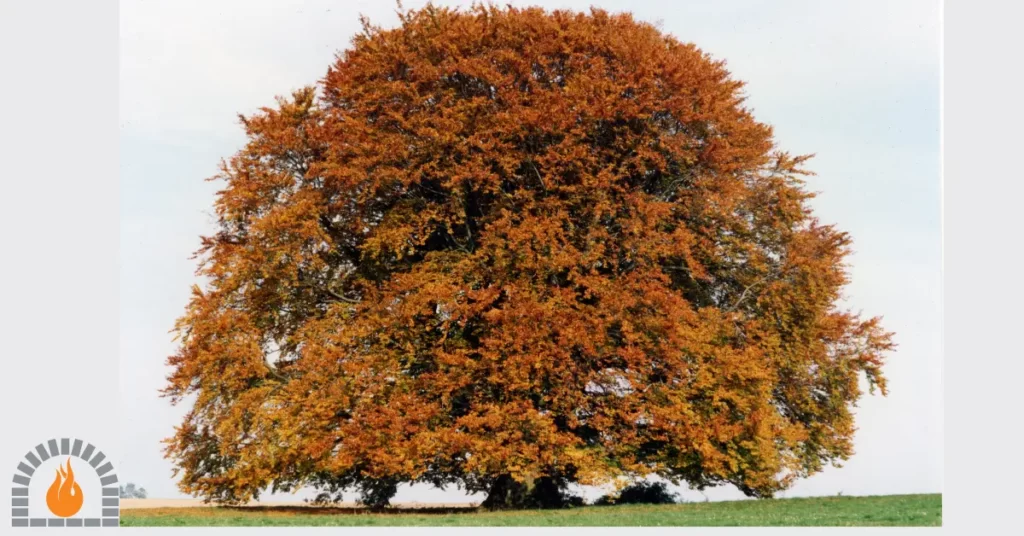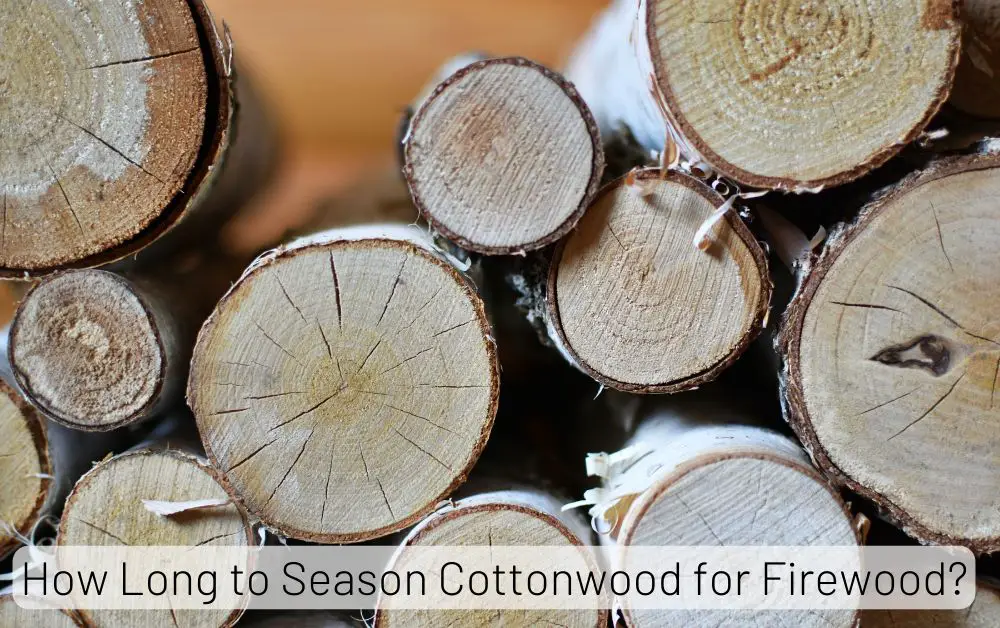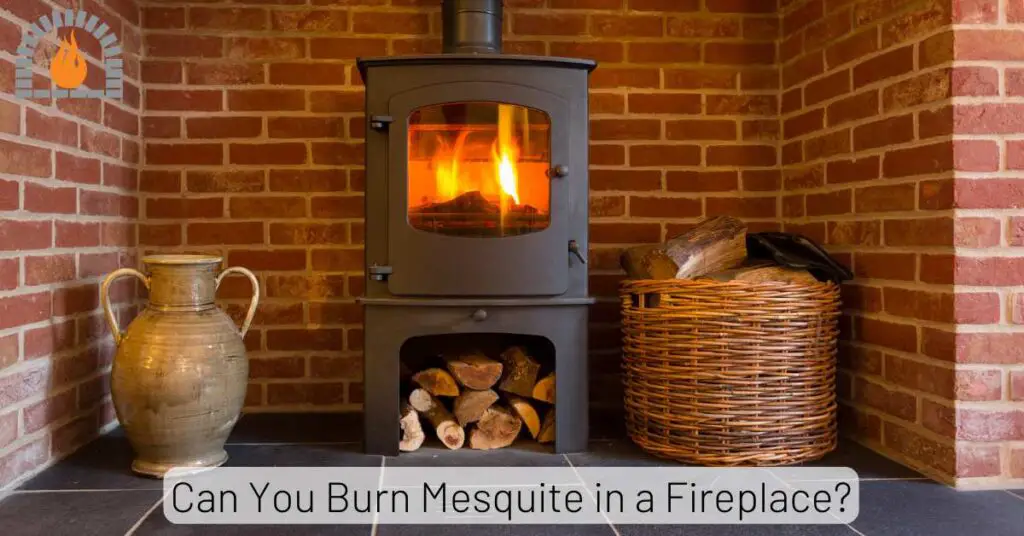In the world of firewood, the choice of wood species can significantly impact the efficiency and quality of your burning experience. One often overlooked contender in this realm is beech wood. Known for its dense and durable characteristics, beech has long been utilized for various purposes, but is beech good for firewood?
Overview
Beechwood, with its high density, burns slowly and produces a substantial amount of heat. The higher the density, the longer the burn time, making beech an efficient option for firewood and heating during colder months. The aroma released when burning beechwood is subtle and pleasant.
| Characteristic | Beech Firewood |
|---|---|
| BTU | High (27.5 million BTUs per cord) |
| Coal Production | Maximum |
| Ease of Seasoning | Takes longer |
| Ease of Splitting | Moderate |
| Nature of Smoking | Minimal |
| Nature of Splitting | Generally straight grain |
| Aroma when Burned | Pleasant |
| Overall Rating | Excellent |
Beech, known for its smooth bark and distinctive pale color, is a deciduous hardwood native to various parts of the world. The wood itself is dense and durable, making it a popular choice for furniture and flooring.
But how does it fare when it comes to serving as firewood?
Is Beech Good For Firewood?
Yes, beech is considered one of the best firewood for fireplace, stoves and indoor or outdoor use. It boasts a high energy content, burning efficiently and emitting a substantial amount of heat. Beech wood is known for its maximum coal production, minimal smoking, and reduced sparking.
Furthermore, it produces a long-lasting and steady flame, accompanied by a pleasant aroma when burned.
However, there are a few considerations to keep in mind. Beech wood is dense, which means it may take longer to season (dry) compared to less dense woods. Properly seasoned wood burns more efficiently and cleanly.
It is essential to allow beech wood to dry for a sufficient amount of time before using it as firewood.

Pros of Beech Firwood
-
Beech wood provides a significant amount of heat when burned.
-
It has a prolonged burning duration, maintaining a consistent temperature.
-
Beech firewood produces minimal smoke and leaves little residue.
-
Its moderate density and straight grain make it easier to split.
-
Suitable for heating, cooking, and smoking, imparting a mild flavor.
-
Beech wood has a pale and attractive color with a smooth grain pattern.
-
Common in many regions, making it easily accessible and cost-effective.
Cons of Beech Firewood
-
Beech wood may take a longer time to dry properly before use.
-
It has a moderate tendency to produce sparks when burned, which can be a concern.
-
The accessibility of beech firewood can vary, and it may not be as readily available in some regions.
-
Excessive harvesting of beech wood can impact local ecosystems and wildlife.
-
Beech firewood may be more expensive in certain regions depending on supply and demand.
-
Beech wood has a relatively mild scent when burning compared to some other hardwoods.
Related Post: How Much Is A Rick of Firewood?
Beech VS Oak Firewood
| Characteristic | Beech Firewood | Oak Firewood |
|---|---|---|
| Heat Output | High | Very High |
| Burn Time | Long | Very Long |
| Ease of Splitting | Moderate | Moderate to Difficult |
| Seasoning Time | Slow | Moderate |
| Sparking | Moderate | Low |
| Density | Moderate | High |
| Availability | Common | Common |
| Aroma | Mild | Strong |
| Cost | Moderate | Moderate to High |
| Versatility | Versatile (heating, cooking) | Versatile (heating, cooking, smoking) |
| Environmental Impact | Considerate harvesting important | Considerate harvesting important |
Beech Firewood Drying Time
The drying time for beech firewood can vary, but it often takes at least six months to a year to properly season. Some sources recommend letting it season for up to two years for optimal results.
Use a moisture meter to check the moisture content of the wood. Well-seasoned firewood typically has a moisture content below 20%. Drier wood burns more efficiently and produces less smoke.

Related Post: Is Box Elder Good Firewood?
Caution When Using Beech Wood as Firewood
-
Beech wood is a hardwood suitable for firewood, burning hotter and longer than softwoods.
-
Proper seasoning (drying for six months to a year) is crucial to reduce moisture content and ensure efficient, clean burning.
-
Beware of creosote buildup in the chimney; use well-seasoned wood and maintain proper ventilation to minimize fire hazards.
-
Beech wood burns slowly, producing a long-lasting bed of coals; consider combining with faster-burning woods for quicker, intense fires.
-
Some individuals may be sensitive to the smoke produced by burning beech wood, so ensure good ventilation, especially for those with respiratory conditions.
-
Check local regulations on wood burning, as some areas may have restrictions or bans on specific types of wood.
-
Store firewood in a dry, well-ventilated area to discourage insect infestations.
-
Regularly maintain heating equipment and follow safety guidelines when using firewood.
Affiliate Disclosure: Fireplaceadviser.com is a participant in the Amazon Services LLC Associates Program. We may earn a commission when you click on certain links on this site and purchase.

Hello!! I am Jamal Khan. I often fix my home electric heaters and gas stove problems and research the common issues in the heating units to improve my knowledge and expertise. The aim of establishing fireplaceadviser.com is to share my expertise and knowledge with my audience.















